Feeding orchids at home with mineral and folk remedies
Orchid - a very popular flower, it is used for design decoration of apartments and office premises, it is also a wonderful gift. Many exotic lovers try to grow a tropical plant at home, but not everyone succeeds without proper feeding.
Content:
- Features of an indoor flower
- How can you fertilize an orchid?
- How and when should flowers be fertilized?
- Orchid feeding with folk remedies
- Is it possible to harm a flower by feeding?
Features of an indoor flower
The main feature of the orchid is that it is an epiphyte flower. In nature, in humid tropical thickets, it is attached to the trunks of trees - to plants for the phorophytes, but the orchid does not parasitize and does not feed on them. It gets its energy from photosynthesis, humid air and precipitation in the form of fog or rain.
Flowers are used by other plants only as a support and thanks to them they are closer to the light. Orchids can be mounted even in rocky areas simply on stones. Orchids are sold, as a rule, in thin plastic pots filled with any light substrate, most often pine bark. It does not nourish the flower, but serves as a fixation and does not allow it to dry out.
At home, the flower can be kept in the bark, or expanded clay can be used, sphagnum, gel, mineral wool or other artificial material.
The most important thing when growing an orchid is to properly care for the plant and create conditions closer to natural ones. The main factors for the growth and development of a flower: good lighting, correct watering regime, temperature and humidity. An important role in the cultivation of an orchid is played by top dressing.
How can you fertilize an orchid?
If you want to increase the flowering period of the orchid, feeding should be done one and a half to two weeks before budding begins. You need to use liquid fertilizers, since other feeding methods will not be able to fully fertilize a specific soil.
For indoor growing of orchids, the following fertilizers are suitable:
- Bona Forte. Phalaenopsis is one of the best fertilizers for orchids, it extends the flowering period up to six months. Before the flowering of the plant, the dressing is diluted in half, and after that - strictly according to the instructions.
- Greenworld. Top dressing is done before watering. It is necessary to carry out, diluting the drug in half, and drops falling on the plant should be removed with a damp cloth.
- "Flora". An effective natural fertilizer consists of an extract of vermicompost. A convenient spray bottle makes it possible to evenly feed outside the root zone of the plant.
- "Emerald". Foliar top dressing with the drug eliminates yellowed foliage.
- "Dr. Foley is an orchid." The product is perfect for daily spraying.
Use liquid fertilizers only when necessary and very carefully. It is better to underfeed the plant and dilute the fertilizer three times than overfeed it, on the contrary.
You cannot feed flowers immediately after their acquisition, freshly transplanted or diseased plants, as well as during their flowering period - this will only harm. The growth promoter is applied only to healthy plants.
When the direct rays of the sun hit the flower, it is not sprayed, as well as at low temperatures and draft. Do not allow fertilizers to fall on the plant or buds.
When and how should flowers be fertilized?
You need to fertilize orchids with fertilizers only for this type of flower and only in the phase of active growth. One feeding for two weeks will be enough. These fertilizers are less concentrated in macro- and microelements, since soil salinity destroys epiphytes.
If fertilizers for orchids are not available, you can purchase fertilizers for other indoor plants, necessarily flowering, but they will need to be diluted two or even three times.
In order to start feeding, you first need to soak the roots of the orchid. To do this, they need to be lowered into soft, necessarily warm, settled water, only after that you can fertilize the flower. This is necessary so that the delicate roots do not get burned.
The orchid should not be in the fertilized solution for more than 20 minutes. After the remnants of the fertilized liquid are drained from it, it is put in its original place. With the arrival of the autumn-winter period, feeding stops, or decreases to one per month. But in the spring it will need to be fed regularly.
Fertilizer composition:
- Fertilizers for feeding orchids contain calcium, potassium, phosphorus, and nitrogen.
- It is important to know that for plant growth, fertilizers are used that are responsible specifically for growth or other universal fertilizers for flowering plants, only of a lower saturation.
- Phosphorus is essential for the metabolism of proteins and carbohydrates, for plant growth and photosynthesis, especially for a small one. It promotes lush blooms and luscious, healthy foliage.
- Potassium is responsible for carbohydrate and nitrogen metabolism, improves photosynthesis, retains moisture in cells in plants. But with a low potassium content, nitrogen exchange is completely disrupted.
Fertilizing orchids with folk remedies
Manure, compost and other types of organic fertilizers are only suitable for terrestrial orchid species such as Cypripedium or Cymbidium. However, at home, it is very difficult to determine the absolutely correct ratio of minerals in organic fertilizers, so it is better to still use store-bought mineral fertilizers.
Industrial fertilizers contain a complete set of all substances necessary for orchids. But some flower lovers fertilize their plants with folk remedies, for example:
- Tea and coffee. Natural acidifiers of the substrate, contain a number of minerals in low concentrations.
- Banana peel. In one liter of water, the peel of one banana is infused for a couple of days. After that, the infusion must be diluted with water in a 1: 1 ratio and after watering it is fertilized with a flower.
- Water from boiled potatoes. Loaded with potassium. It is cooled, filtered and fertilized with plant roots.
- Weakly saturated decoction of onion peels. Also contains potassium. The broth prevents the development of many diseases and decay. For its preparation, a glass of husk is brewed in a 3-liter jar of boiling water, wrapped up and infused for 8 hours, then diluted 1: 3 and the watering agent is ready.
- Wood ash... In most cases, conifer ash is used, which is very rich in minerals. It is better to prepare the solution for irrigation as weak as possible (200 g of ash per 1 liter of water).
Experienced gardeners do well with folk fertilization methods, they are affordable and easy to prepare. However, to correctly calculate the dosage, you need to have some experience and skills.
Is it possible to harm a flower by feeding?
Some growers believe that the abundance of fertilizers is the key to success in growing a home orchid. This opinion is wrong. Orchid grows in bark and is sometimes loosely covered with moss. Improperly applied fertilizer can burn the roots or otherwise damage the plant.You need to fertilize the flower with exclusively correct fertilizers, specially developed for this type of flower, taking into account the dose precisely and even reducing it, then the flower will be fresh and healthy.
In order to help the plant at the right time for it, you need to know when and with what it needs to be fertilized, and when it should not be done at all. A newly acquired plant cannot be transplanted or fertilized. The substrate in which the orchid is located serves only as a support, if the roots of the plant do not fit well in the pot, it should not be disturbed for 2-3 years. Newly transplanted, diseased and weak plants cannot be fertilized either. There are other drugs for them: succinic acid, root, epin.
Orchids are not fertilized during the dormant period.
Do not rush to fertilize the orchid without studying the question of feeding it. The appearance of the flower itself will tell you when it will need it. Growing an orchid is not difficult, as long as you know how to do it right. Small efforts will be justified by the exuberant flowering and bright colors of a beautiful orchid.
More information can be found in the video:



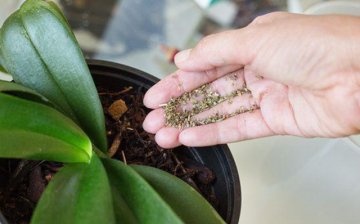
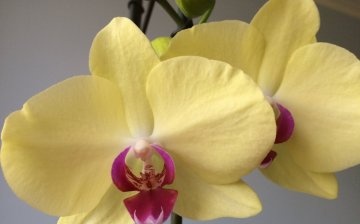
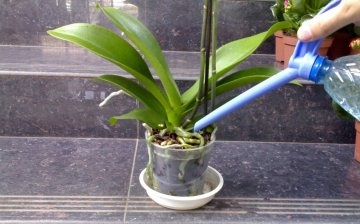
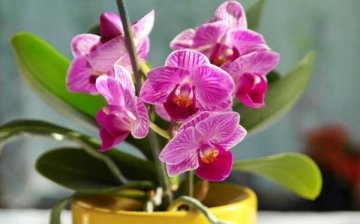
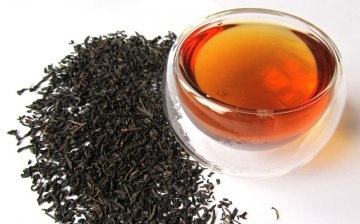
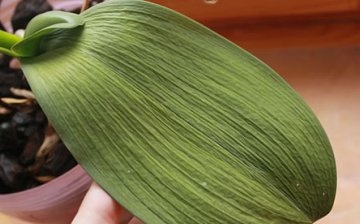






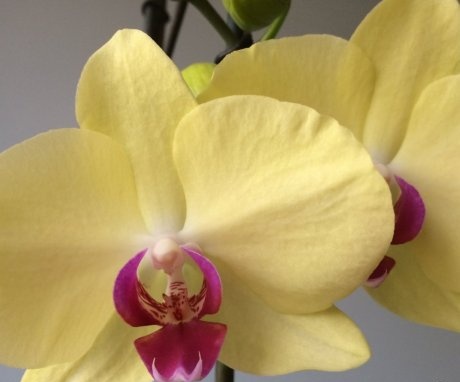
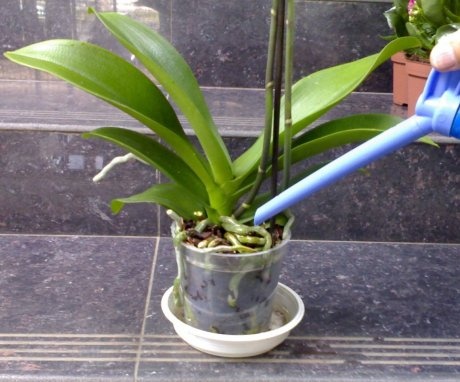
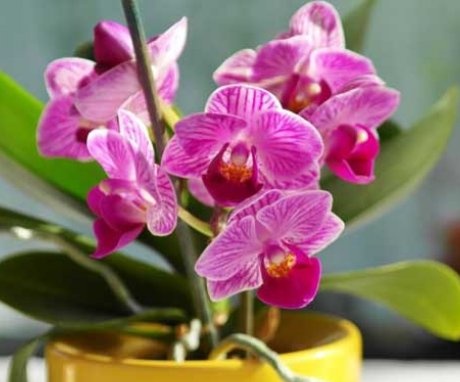
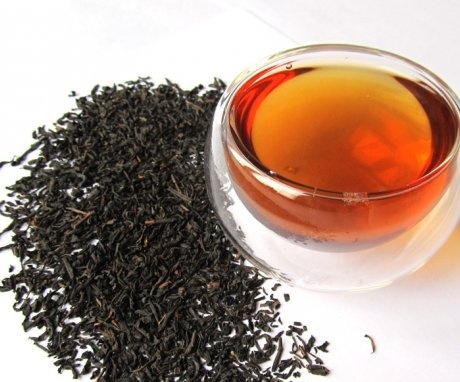
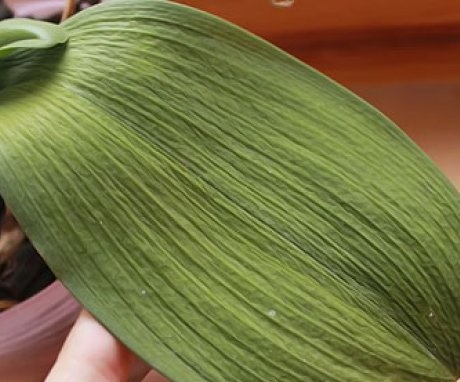
You wrote correctly that it is necessary to buy special soil for indoor orchids. We buy it too. This is the secret to successfully growing orchids at home.
We have not yet fed the Phalaenopsis orchid, although this flower has been growing with us for more than five years. Once they transplanted an orchid, that is, they changed the bark in a pot. I did not know that the flower needs to be dipped in fertilizer for a few minutes. Somehow it will not turn out very conveniently, if every time, remove the flower from the pot and feed it.